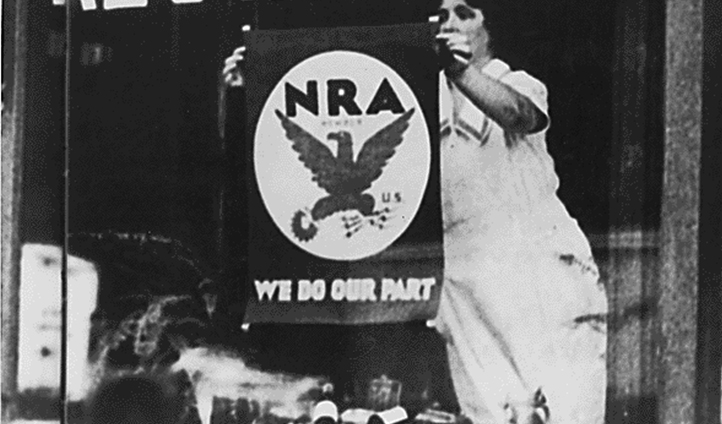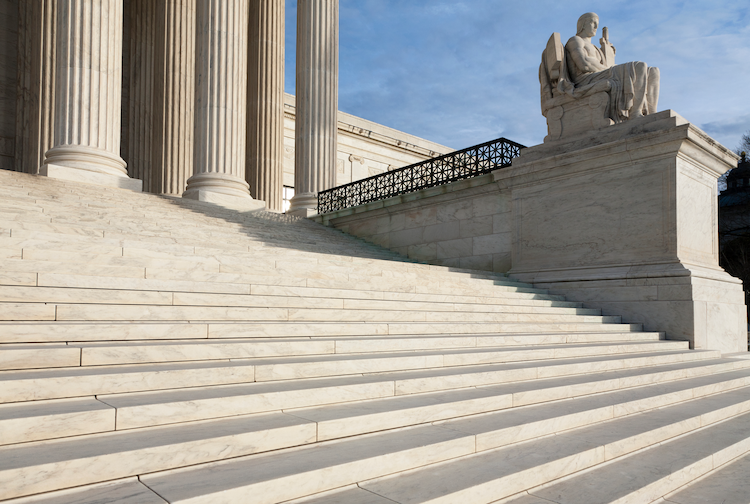National Industrial Recovery Act of 1933
Historical
The National Industrial Recovery Act of 1933 (NIRA) was a key element of President Franklin Roosevelt’s New Deal Program. The legislation aimed to stimulate the U.S. economy by fixing wages and prices. While it was ultimately ruled unconstitutional by the U.S. Supreme Court, several of its labor provisions formed the basis of subsequent regulations.
Key Provisions of the NIRA
President Roosevelt signed NIRA into law on June 16, 1933, during the height of the Great Depression. It was intended to “encourage national industrial recovery, to foster fair competition, and to provide for the construction of certain useful public works, and for other purposes.”
NIRA included two different initiatives. Title I of the act implemented codes of fair competition for several key industries, while Title II established a public works program, which became known as the “Public Works Administration” (PWA). The statute created the National Recovery Administration (NRA) to oversee the drafting of the industry codes, and President Roosevelt appointed Hugh S. Johnson as administrator of the NRA.
Like many New Deal programs, NIRA represented a bold change. It mandated that companies formulate industry-wide “codes of fair competition” that effectively fixed prices and wages, established production quotas, and imposed restrictions on the entry of other companies into the alliances. NIRA also established industrial self-regulation, subject to presidential approval. It required each industry to create codes of fair competition, as well as codes for the protection of consumers, competitors, and employers. NIRA also suspended antitrust laws with respect to the codes.
In another major change, workers were authorized to organize and bargain collectively. However, they could not be required, as a condition of employment, to join or refrain from joining a labor organization. NIRA also required the standards to be created regarding maximum hours of labor, minimum rates of pay, and working conditions in the industries covered by the codes, and also authorized the President to impose such standards in the absence of a voluntary agreement. Recognizing that it was intended as a temporary measure to bolster the economy, NIRA included a sunset provision nullifying the regulation in two years.
Supreme Court Declares NIRA Unconstitutional
NIRA was widely criticized by corporate America, workers, and Congress, in large part because each group had competing goals. NIRA also created a dearth of new regulations, with the NRA approving 557 basic and 189 supplemental industry codes in two years. NIRA also resulted in the prohibition of nearly 5,000 business practices. Most importantly, the controversial initiative did little to improve the economy.
In 1935, the U.S. Supreme Court struck down NIRA in Schechter Poultry Corp. v. United States. The Court held that the New deal regulation violated the separation of powers as an unconstitutional delegation of legislative power to the executive branch. The justices further held that NIRA exceeded Congress’ power under the Commerce Clause.
Previous Articles
SCOTUS Rules Trump Can Remain on Ballot Rejecting 14th Amendment Challenge
by DONALD SCARINCI on April 4, 2024
The U.S. Supreme Court unanimously held in Trump v. Anderson, 601 U.S. ____ (2024), that states can...
SCOTUS to Take Up Abortion Again in April
by DONALD SCARINCI on April 2, 2024
The U.S. Supreme Court will take up abortion again with oral arguments in Moyle v. United States sc...
SCOTUS Ends February Sitting With Oral Arguments in Six Cases
by DONALD SCARINCI on March 21, 2024
The U.S. Supreme Court held oral arguments in six cases to end its February sitting. A pair of case...
The Amendments
-
Amendment1
- Establishment ClauseFree Exercise Clause
- Freedom of Speech
- Freedoms of Press
- Freedom of Assembly, and Petitition
-
Amendment2
- The Right to Bear Arms
-
Amendment4
- Unreasonable Searches and Seizures
-
Amendment5
- Due Process
- Eminent Domain
- Rights of Criminal Defendants
Preamble to the Bill of Rights
Congress of the United States begun and held at the City of New-York, on Wednesday the fourth of March, one thousand seven hundred and eighty nine.
THE Conventions of a number of the States, having at the time of their adopting the Constitution, expressed a desire, in order to prevent misconstruction or abuse of its powers, that further declaratory and restrictive clauses should be added: And as extending the ground of public confidence in the Government, will best ensure the beneficent ends of its institution.




